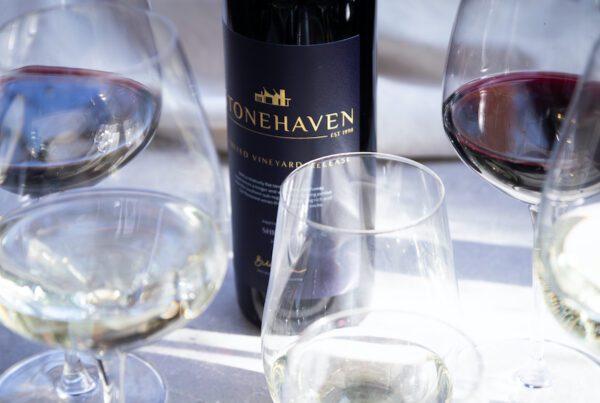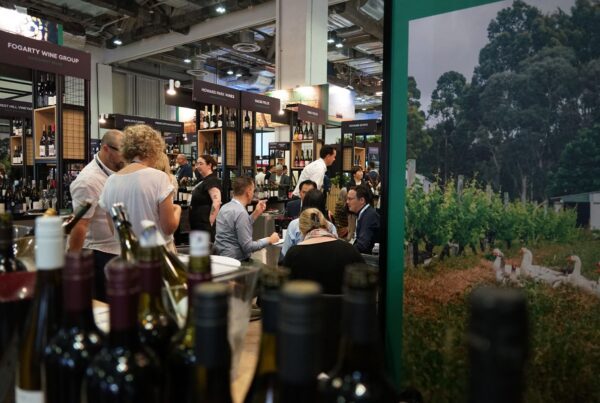
There is a lot of controversy about the situation surrounding the Australian wine industry. The recent inquiry into the industry sounds a lot like the inquiry 10 years ago. Australian wine sales are not increasing, while competing countries and regions continue to promote their wines and grow their sales. Australian grapegrowers and winemakers would like the government to increase funding for their industry.
At the same time representative industry organisations and players cannot agree on the proper policy settings to help the Australian wine sector. Also at the inquiry comments were made about the lack of knowledge among many government and other representatives about the Australian wine industry. I would add lack of knowledge among many of the industry players themselves about the right way forward.
Certainly our wine industry is complex. There are major winemaking companies, there are small winemaking companies and there are grapegrowers. Each of these has at least one goal in common: to sell more and better Australian wine at higher prices. Without taking into account the politics of the situation, the solution to our biggest problem is quite simple. We should stop worrying about the small tactical things and focus on the big issue.
If we want to sell more wine regardless of price point, our wines must be salient when the buyer is making his or her selection. Salience in a marketing sense is: being recognised as a viable option at the moment of purchase. This means not only must the buyer be aware of the wine, he or she must consider the wine suitable for the intended consumption occasion. In our research for wine sold at prices above $15, country, region and grape variety play a bigger role than the brand in all our key markets.
Australian wine in its previous heyday filled the shelves with a number of brands mainly at lower prices. The salience developed from this endeavour resulted in many consumers in export markets only considering Australian wine for the most common and low-priced occasions. Once this occurred, it wasn’t difficult for competitors to replace Australian wine with their own wines for these occasions, since the varietal names were identical. The issue is how to gain salience for more wines at higher price points. This is where country and regional mental associations gain importance. Australia must organise and control the mental associations we put forward to all buyers, trade and consumer. At the moment we have marketing done by Wine Australia, by regional associations, and by individual companies. These are not always in concert. The first rule of branding is to make sure that the brand image conveyed is consistent among all players promoting the brand. I don’t think this is always true about Brand Australia.

In our research group’s experience, we find a rather broad set of associations linked to Australia. These are typically a combination of commercial or low priced images along with a few images of higher priced wine. This confusion likely removes Australian wine from consideration when buyers are looking at higher-priced wines for a more formal or important occasions. Merely obtaining more funding for marketing and promotion will not necessarily lead to greater sales of high-priced Australian wines. Before we ask the government to provide such funding, the wine industry needs to understand how to go about growing the salience for Australian wines. If we don’t start with a common strategy agreed upon by all the players in the industry, we will merely spend more money without attaining our goals.
I am involved with Patricia Williamson’s (of the AWRI) PhD research sponsored by Wine Australia into how to position Australian wine in China. We tested five different positioning statements with a wide range of Chinese wine consumers. Consumers read one of the articles about Australian wine or a control article and then selected wines from a simulated shelf.
The same respondents then selected wine from a simulated shelf 10 days later without reading any article. The results showed two positioning strategies were much more effective in increasing the choice of Australian wines compared to French, Italian or Chinese wines. These positioning statements related to Chinese consumers’ preference for the taste of Australian wines or the clean and green environment where Australian wines are produced. Even after 10 days consumers, who read the articles, still preferred to buy Australian wine even though at a reduced rate compared to the first purchase occasion.
The other positioning statements, such as the long history of Australian wines, or the beautiful beaches and tourism in Australia, or of the regulations that ensure wines are properly labelled and safe to drink, did not increase purchasing nearly as much. This research shows that the proper testing and selection of an overall positioning statement for Australian wines in general can increase purchase even after a period of time. Overall country positioning statements do not reduce any brand’s ability to promote themselves or to create their own set of associations within the overall country positioning, but this would provide a common framework on which to build mental associations.
The merger of Wine Australia and GWRDC is a good idea, but full integration has yet to occur. In my experience the marketing side of Wine Australia is not fully aware and does not necessarily utilise the research developed by the other side of Wine Australia. I also believe that the fluidity of the board and management of Wine Australia has slowed progress in the endeavour to create better marketing.
After the new board is bedded down, the members should hold a training session to understand how marketing works. Once this kind of knowledge is embedded in the board and management, then the organisation can properly direct a global positioning strategy for Australian wine, and then attempt to gain extra funding for this activity. The Ehrenberg Bass Institute for Marketing Science has many large corporate sponsors, which have similar issues. Some of these companies have hundreds of brands across dozens of countries with differing marketing positionings and have the same issues as Wine Australia. In each case the solution has been to train senior management to understand how marketing actually works and then for senior management to work with the brand managers to standardise the overall positioning. In the long run these companies end up spending fewer dollars with greater effect than before this process.
Unfortunately, we run into the same problem at Wine Australia as we have in many of these major consumer product corporations. People with long experience in the business world believe they understand how marketing works. As I note many times in my book, This Little Pinot Went to Market, most marketing is done using past experience and anecdotal understanding.
Our research has shown much of this is simply not proven by empirical studies of marketing practice. Improving the market position of Australian wines must start by properly utilising known facts about how marketing works, rather than attempting the same activities which are likely to produce the same results as in the past.









Recent Comments